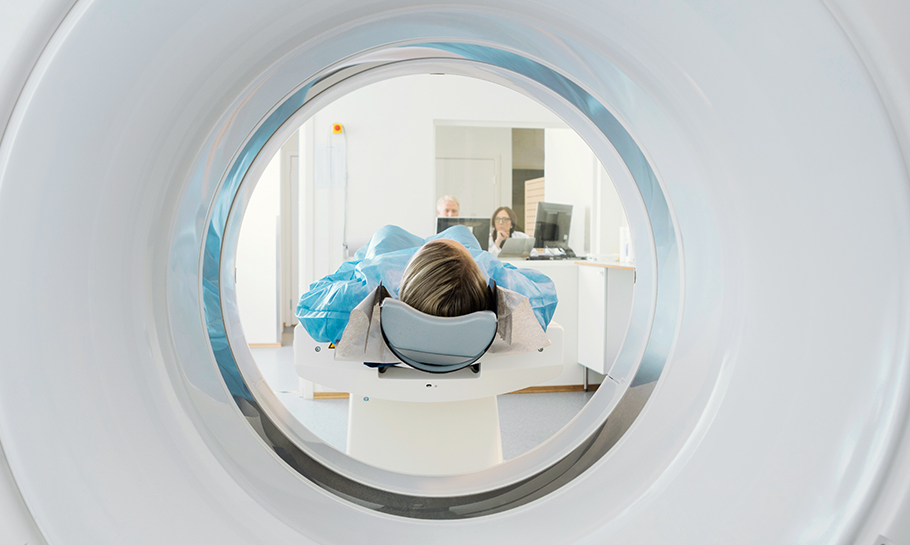CT Scans

They say that an image is worth a thousand words. That’s especially true in medicine, where an image can help your doctor diagnose a condition or figure out which treatment might work best for you.
To help physicians make a more accurate diagnosis, the PET/CT combines both a picture of function (PET) and a picture of anatomy (CT) to produce a merged picture. A merged picture is important because it can give your physician a more detailed view of what’s happening inside your body.
- PET (Positron Emission Technology) uses a radioactive type of sugar to produce pictures of the function and metabolism of cells in the body. This is important because diseases can start in the cells.
- CT (Computerized Tomography) scans uses X-ray beams to create cross-sectional images (slices) to produce 3D pictures of internal organs. CT imagery is different than other imaging because it can display a combination of soft tissue, bones and blood vessels all in a single clear image.
What you can expect during a PET/CT Scan
The length of the exam is determined by your height and area of your body that is being studied. Most PET/CT scans are completed within 20 to 40 minutes. Before the scan, you will be injected with a radioactive tracer.
Then, you will rest for approximately 30 to 45 minutes, while the radioactive compound distributes throughout your body, and is processed by the organs being evaluated.
The CT portion of the exam is completed first, followed by the PET portion. You may be asked to hold your breath for several seconds while the CT scan is performed. It is important that you don’t move for the duration of the scan because motion can blur the images.
Preparing for a PET/CT Scan
Consult your physician prior if you are pregnant, diabetic, unsure about medications or if you’ve had recent radiation therapy. Please inform your physician of all medications you are taking and if you have any allergies. If you have a known allergy to contrast material, or “dye,” your physician may prescribe medications to reduce the risk of an allergic reaction.
Inform your physician of any recent illnesses or other medical conditions and whether you have a history of heart disease, asthma, diabetes, kidney disease or thyroid problems. Any of these conditions may increase the risk of an unusual adverse effect. Women should always inform their physician and the CT technologist if there is any possibility that they are pregnant.
Wear comfortable, loose-fitting clothing to your exam. You may be given a gown to wear during the procedure. Metal objects including jewelry, eyeglasses, dentures and hairpins should be left at home or removed prior to your exam. You may also be asked to remove hearing aids and removable dental work.
Depending on the type of study you may be asked not to eat or drink anything four to six hours before the exam. Take prescribed medication on the day of the exam unless instructed otherwise.